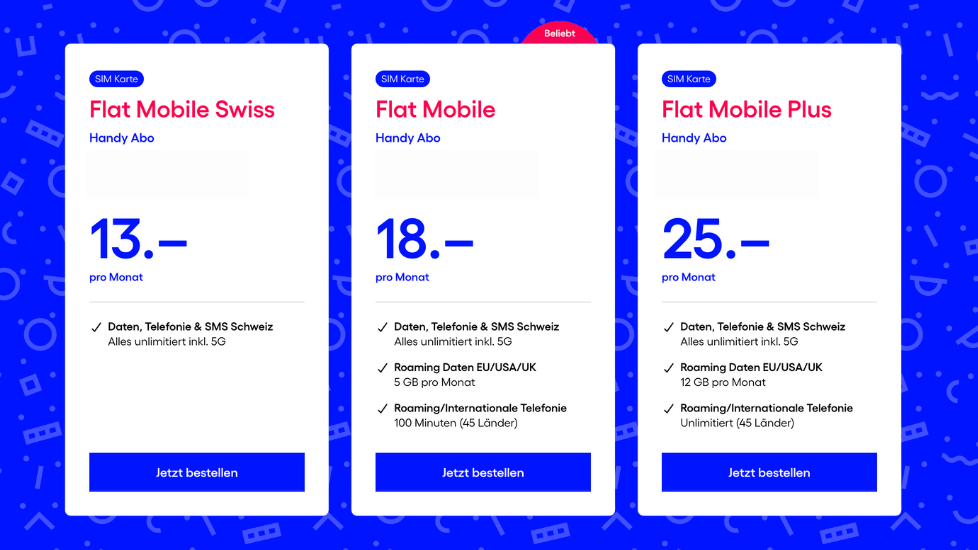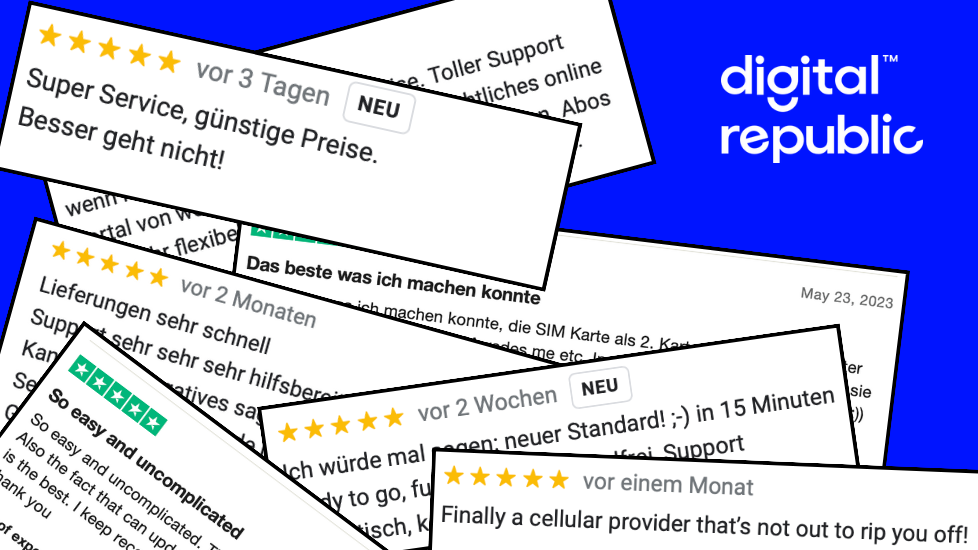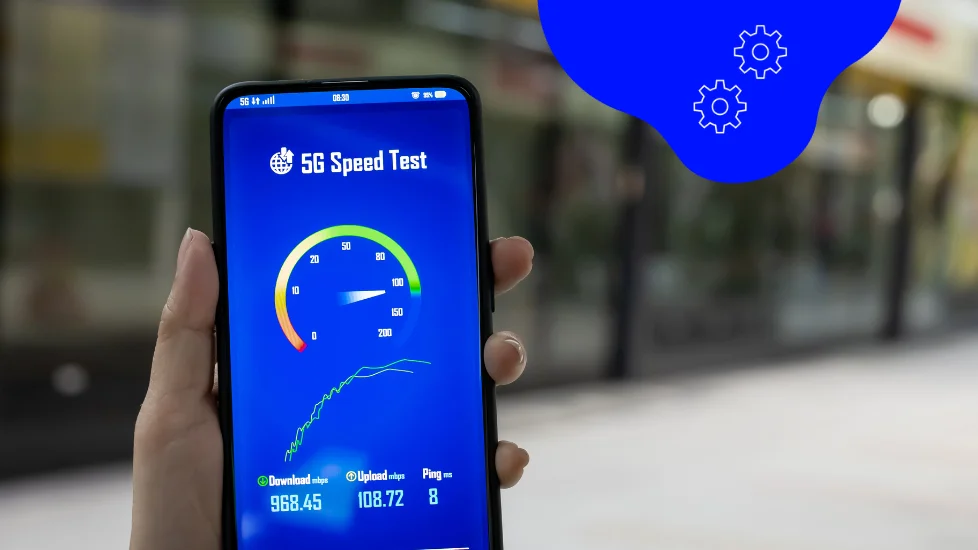Mobile internet for everyone and everything
eSIM – a small chip with the potential to change a whole industry
The future of the telecommunications industry

For a long time, the eSIM was mainly used in special applications around the Internet of Things (IoT). Vehicle manufacturers, for example, equipped their telematics systems with eSIM modules in order to optimize the production of integrated modules and to switch between network providers over the air in a country-specific and cost-optimized manner (eUICC v4.0).
In the end customer segment, the small chip had powerful opponents: the network operators – who have continuously refused to offer eSIM-enabled cell phones at all. To understand the reasons for this fear, I think it is important to understand the changes and benefits eSIM offers to me as a consumer.
The Customer Journey – from In-Shop to Online Experience
In the Store
Today, the majority of cell phone contracts in Switzerland are still placed in stationary retail stores. As a customer in the mobile phone business, a new device and a suitable provider are recommended to me. The discount on the device is reflected in a contract period of 12 or 24 months. When I sign the contract, I have to present my identification document and sign the contracts on paper or the PDF version on the tablet. Afterwards, the physical SIM card is activated in the system and installed in the new device by the employee: Everything runs! Time expenditure approx. 1-2h with travel, queuing and consultation.
Online with eSIM
The digitalization of the customer journey mentioned above was already possible without eSIM. Only the SIM card still had to be sent by mail. Today, the latest flagship models of the major smartphone manufacturers are equipped with eSIM and the in-store Customer Journey can be displayed 100% online.
As a customer I inform myself on comparison portals like https://dschungelkompass.ch or https://comparis.ch independently and choose the mobile phone provider that suits me best. On the provider’s website I create an account, choose the appropriate tariff and deposit a credit card as a method of payment. ID verification is done online and the contract, which can be terminated at any time, becomes legally binding upon acceptance of the terms and conditions. Finally I receive an email with the QR Code of a new eSIM profile.
The eSIM profile is installed via the QR Code Scanner integrated in the smartphone’s operating system. Everything runs! Time expenditure 5 min.
Cost optimization with Provider Split
With the first dual-SIM cell phones, resourceful consumers have already discovered that it is no longer necessary to rely on one mobile provider alone to cover all needs: For example, a user can use one inexpensive prepaid SIM card for telephony and one for mobile Internet. While other users prefer to use their second SIM slot for business connections or a European SIM card with good conditions abroad.
The eSIM behaves similar to the Dual-SIM cell phones. The only difference is that a large number of virtual SIM cards can be installed on a single device. These can be bought and cancelled with a few clicks. From the consumer’s perspective: Brilliant.
Roaming as Market Place
New global eSIM brokers act as intermediaries between end customers and mobile operators. They have made it their business to sell eSIM-available roaming offers online. Their customers choose their vacation destination and then see a list of different data packages from local eSIM providers. The inexpensive data packages can be purchased with a credit card and installed as an eSIM immediately.
Passengers are already being made aware of eSIM roaming offers in the arrival areas of international airports.
The telephone number loses importance
Voice-over-IP software, or VoIP for short, makes it possible to transmit voice calls via the Internet instead of the classic telephone line. The audio signal is digitalized and sent through the Internet in small encrypted packets. Apps like WhatsApp, Skype, Facebook or Snapchat have this technology integrated. With the rise of these apps, the communication behavior of users has also changed dramatically within a few years.
Even for me the telephony behaviour has already changed: I use my mobile phone connection less and less for outgoing calls. If I receive a notification (e.g. via WhatsApp, Zoom, Slack or Teams) that triggers the need for a voice call, I usually start the call directly via the corresponding app. As a result, in countries where smartphones predominate, revenues from conventional telephone connections are constantly declining. The drop in revenues is particularly noticeable in roaming, since VoIP does not involve any telephony connection costs for the travelers.
The total number of voice connections via the Swiss mobile phone networks has fluctuated in recent years with falling prices and in the specific years 2017-2018 has fallen by -0.5%.
Accounts before phone number
From the business customer area we are already used to receiving calls on the smartphone via VoiP apps or e.g. Microsoft teams. The business number belongs to a virtual PBX in the cloud and has no link to the SIM, which merely provides the Internet connection. Since access to the phone number is linked to an account (user name and password), there is no need for time-consuming number porting when changing mobile operators. When changing the provider or device, only the app is reinstalled. After logging in, the customer can be reached via the same phone number again.
The phone number will not disappear so quickly, but it will become much more independent of the mobile phone provider and the SIM. Accounts and other authentification methods will become more important and make it easier to access the phone number.
What does this mean for mobile operators?
The advantages of eSIM for end customers are remarkable. The advantages have different implications for the providers:
- Switching between mobile phone providers will be easier for end customers. In the future, providers will focus even more on customer retention measures to prevent existing customers from migrating. A classic measure in this area is product bundling – discounted combination packages with mobile telephony, fiber-optic Internet, TV or fixed network.
- The trend towards shorter contract periods has been in evidence for several years. The freedom gained with the eSIM to switch between providers quickly and easily will result in multi-year contracts finding less and less acceptance among consumers.
- As a result of the shift from stationary subscription contracts in stores to online contracts, store networks are becoming less important. The costs of maintaining these networks are enormous and are reflected in end customer prices. Small, end-to-end digital providers are taking advantage of this cost advantage.
- The convenient way to buy an eSIM profile and several gigabytes of data volume with just a few clicks will further reduce revenues in the already declining roaming sector.
- The processes for signing up for a subscription, switching between products and cancellation will be simpler and more customer-friendly. The important measurement CAC (Customer Acquisition Costs – costs to acquire a new subscriber) is directly related to the quality of the online subscription process. This is especially true for pure online providers.
An opportunity for the providers of the future
Our everyday life is becoming increasingly connected and the number of intelligent devices that accompany us is growing. In addition to the well-established tablets, laptops and smartwatches, applications from the Internet of Things (IoT) will increasingly enter our lives in the future. Whether it is an IP camera, dog collar, fitness tracker, lawn mower or the heating control in a vacation home, many of these devices require access to an LTE-4G/5G mobile network for information exchange.
In order to manage all these devices, customers will in future no longer simply sign up for a cell phone contract, but will administer the rates for a large number of devices via a single user account.
Marco Arnold | Co-Founder Digital Republic AG“In the future, customers will not only
conclude a cell phone contract, but also administer the tariffs for a large number of devices via a single user account.”
The customer need to be able to easily manage many devices and tariffs and the changes that come with eSIM open up opportunities for new players in the mobile phone market. In my opinion, these could look like the following:
- 100% online – From acquisition via online marketing to billing via credit card.
- The needs of the customers move to the center and the focus is on the digital customer experience and a user-friendly web portal.
- The tariffs match the different devices and applications such as Smartphone, Tablet, GPS Tracker, etc.
- A new device and the appropriate tariff are set up in the customer portal in just a few steps.
- Connections, which are no longer needed, can be cancelled within a few clicks
- The cost savings (rent, maintenance, personnel, logistics, etc.) can be passed on to customers by eliminating stationary stores and optimizing processes; this includes, for example, the elimination of activation fees for SIM cards.
- Customer-friendly and local support.
- Fiber optic offers, VoIP telephone numbers and static IPv6 addresses round off the mobile phone offer.
The current developments in the mobile phone sector correspond 100% to the current spirit of the times. The company is becoming more and more accustomed to Netflix-like offers, with the special features ‘Upgrade, Downgrade and Cancel any Time’. The shackles of long contractual agreements are slowly but surely becoming a thing of the past. Simple and honest deals are the key values of new players – as we at Digital Republic have already lived and internalized. In my opinion, eSIM is a small revolution for democratization in an industry where normally large companies live out their dominance. Last but not least… the customer should benefit from the progress and the resulting advantages.
Posted on 30 September 2020 Images created by Digital Republic AG
Discover Our Other News Articles

The Development of Our Ideal Cell Phone Plans for Switzerland
The path to the current Trio Flat Mobile Swiss, Flat Mobile, and Flat Mobile Plus cell phone plans is also an example of how Digital Republic wants to function as a provider and where its priorities lie. We have quickly transformed ourselves from a pure data SIM provider to a cell phone plan provider. And we have completely rethought the development process.

The Affordable Mobile Provider With Award-Winning Service
When it comes to mobile providers in Switzerland, the wheat is often separated from the chaff when it comes to price. Either you pay little for your subscription and do without services like support or 5G, or you go to one of the big providers and pay more than you might like. At Digital Republic, you get both!

Why 5G Is Not Always Equally Fast
Sometimes fast, sometimes slow, sometimes suddenly 4G again. The network indicator on your smartphone suggests that it is connected to the internet via either 4G or 5G. In fact, a complex mechanism and a lot of communication between your smartphone and the network is taking place in the background to ensure that you always have the best possible connection.
